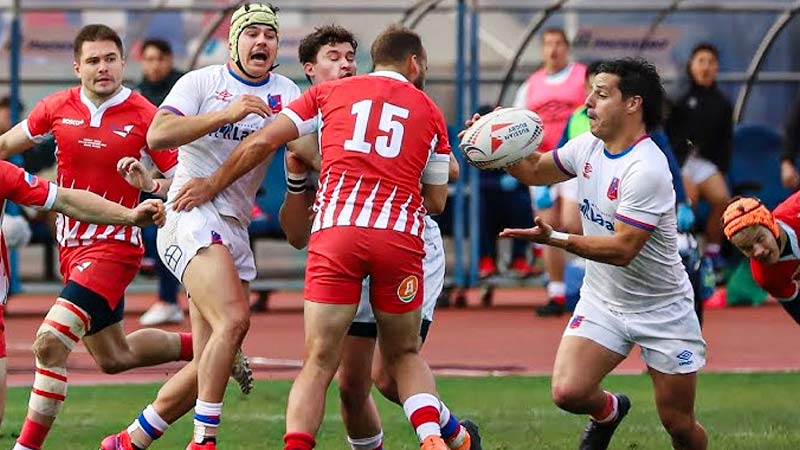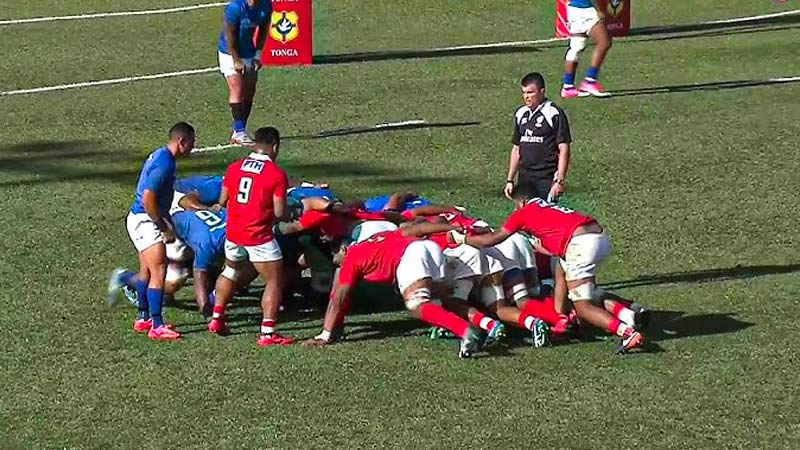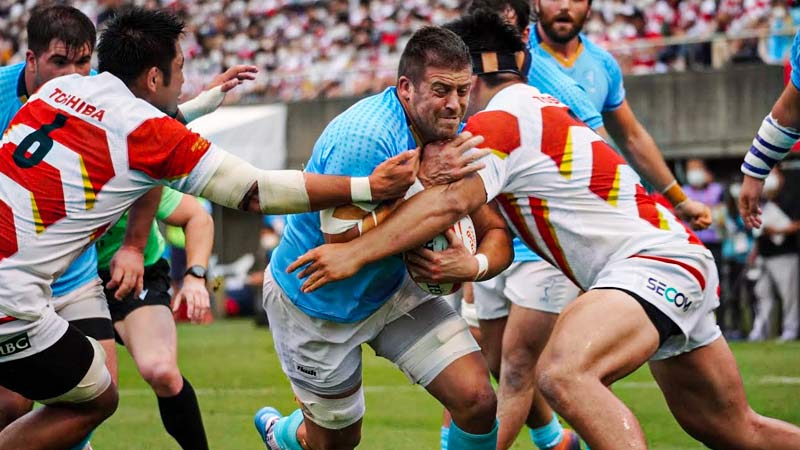In the exhilarating world of rugby, few events command as much anticipation and excitement as a Test Match. While the sport itself is known for its physicality and intensity, a Test Match takes the competition to a whole new level.
But what is a Test Match in rugby, and why does it hold such significance in the hearts of both players and fans?
In this article, we embark on a journey to unravel the essence of a Test Match. We’ll explore the origins of this time-honored tradition, the rules that govern it, and the fervor it ignites among nations.
Whether you’re a die-hard rugby enthusiast or just curious about this captivating sport, join us as we delve into the heart-pounding, bone-crunching world of Test Matches and discover why they are the ultimate battleground where national pride and rugby prowess collide.
What Is a Test Match in Rugby?
A Test Match in rugby, often referred to as an “international test” or simply a “Test,” is a pinnacle of rugby competition where national teams representing their respective countries go head-to-head.
The term “Test Match” originated in cricket, where matches were considered a test of a team’s prowess. In rugby, the concept was adapted to signify a rigorous examination of a national team’s skill and character.
The first recorded international rugby match took place in 1871 when England faced Scotland at Raeburn Place in Edinburgh.
This historic encounter laid the foundation for international rugby competition, eventually leading to the formation of the Home Nations Championship (now the Six Nations) and other international tournaments.
Rules and Format
Test Matches adhere to the same fundamental rules as regular rugby union games, with some minor variations depending on the specific competition and governing body. These rules include aspects such as tackling, scoring, scrums, lineouts, and rucks.
The standard format of a Test Match involves two halves of 40 minutes each, separated by a halftime interval. However, variations exist, especially in certain competitions like the Rugby Championship, where games consist of two halves of 35 minutes.
Test Matches also follow rugby’s comprehensive rulebook, encompassing aspects like forward passes, knock-ons, and penalty kicks.
The Significance of Caps
One distinguishing feature of Test Matches is the concept of earning “caps.” Players receive a cap, often a physical representation like a badge or cap, for each international appearance they make for their national team.
These caps symbolize a player’s contribution to their country’s rugby history and are highly esteemed in the rugby community.
Reaching milestones like 50 or 100 caps is a testament to a player’s longevity, dedication, and skill. It signifies their enduring commitment to representing their nation on the international stage.
The Iconic Tournaments

Test Matches are not limited to a single event but are part of various prestigious tournaments that occur throughout the year. Some of the most renowned international rugby competitions include:
Six Nations Championship
Featuring England, France, Ireland, Italy, Scotland, and Wales, the Six Nations is an annual competition that dates back to the late 19th century.
The Rugby Championship
Formerly known as the Tri-Nations, this tournament involves the national teams of New Zealand, Australia, and South Africa. Argentina joined in 2012, making it a quadrangular competition.
The Rugby World Cup
Held every four years, the Rugby World Cup is the pinnacle of international rugby. It gathers national teams from around the world for a month-long tournament, showcasing the sport’s global reach.
Autumn Internationals
Many rugby-playing nations participate in test matches during the autumn months, often hosting teams from the Southern Hemisphere.
The Intensity of Rivalries
One of the most captivating aspects of Test Matches is the fierce rivalries they foster. Encounters between traditional rivals, such as England and France, New Zealand and Australia, or South Africa and the British and Irish Lions, often transcend the game itself.
These matches carry a rich history and are steeped in tradition, igniting passionate support from fans and players alike.
Rivalries in rugby are not just about the competition; they symbolize cultural and historical connections between nations, making each Test Match a unique and emotionally charged event.
Memorable Moments
Test Matches have produced countless memorable moments that have become etched in rugby folklore. These moments range from breathtaking tries and stunning conversions to heart-stopping tackles and dramatic last-minute victories.
Iconic players like Jonah Lomu, Martin Johnson, Richie McCaw, and Jonny Wilkinson have all left their indelible mark on the history of Test Matches.
Some of the most unforgettable Test Match moments include Jonny Wilkinson’s drop goal to secure England’s Rugby World Cup win in 2003, Jonah Lomu’s bulldozing runs at the 1995 Rugby World Cup, and the epic battles between the British and Irish Lions and New Zealand’s All Blacks.
The Global Rugby Community

Test Matches transcend geographical boundaries and unite rugby fans worldwide.
Whether you’re watching from a packed stadium or a local pub, the shared experience of witnessing national teams competing at the highest level creates a sense of belonging to the global rugby community.
Supporters don their national colors, sing anthems with pride, and partake in traditions that have been passed down through generations. The camaraderie among fans adds to the allure of Test Matches, making them a celebration of rugby’s enduring spirit.
How Many Minutes Is a Rugby Test Match?
A rugby Test match typically lasts for 80 minutes, divided into two halves of 40 minutes each, with a halftime interval of 10 minutes in between.
However, the duration of a Test match can vary depending on certain circumstances and factors. In this explanation, we’ll delve into the standard duration of a rugby Test match, variations, and the factors that can affect its length.
Standard Duration
The standard duration of a rugby Test match is 80 minutes, following the traditional format of two halves.
Each half consists of 40 minutes of playing time, during which the clock runs continuously, with any stoppages (such as injuries, scrums, lineouts, and conversions) included in the overall duration.
At the end of the first half, there is a halftime interval of 10 minutes. This allows teams to regroup, receive coaching instructions, and make any necessary substitutions.
The halftime interval is a crucial period for players to rest and rehydrate, especially given the physical demands of the sport.
Variations
While 80 minutes is the standard duration for most rugby Test matches, there are variations that can affect the length of a match:
Sevens Rugby
In the case of Rugby Sevens, which is a shorter and faster-paced version of the sport, matches are typically much shorter.
A standard Rugby Sevens match consists of two halves of 7 minutes each, with a 1-minute halftime interval. In some tournaments, such as the Rugby World Cup Sevens, matches may consist of two halves of 10 minutes each.
Women’s Rugby
In women’s rugby, the standard duration of a Test match is also 80 minutes, mirroring the men’s game. Women’s rugby follows the same format of two 40-minute halves, with a 10-minute halftime interval.
Factors Affecting Match Duration

Several factors can affect the actual duration of a rugby Test match:
Injuries and Stoppages
Injuries to players, scrums, lineouts, and other stoppages during the game can lead to additional time being played. The referee has the discretion to allow for “injury time” or “stoppage time” to compensate for these interruptions.
Time-Wasting and Conversion Attempts
To prevent time-wasting tactics, such as deliberately slowing down the game, referees may add additional time to the clock to make up for lost minutes.
When a try is scored, the scoring team is given the opportunity to attempt a conversion kick. The clock continues to run during conversion attempts, so the total time elapsed in the match can be slightly longer than 80 minutes.
Substitutions and Kicking Delays
Substitutions are allowed during stoppages in play, and these can also contribute to additional time being played in a match.
Players have a specific time limit for taking kicks at goal, including penalty kicks and conversions. Delays in taking these kicks may result in added time.
Video Referee Reviews
In modern rugby, video referee reviews are used to confirm or overturn decisions made by the on-field officials. These reviews can lead to brief stoppages in play.
Overtime and Extra Time
In some rugby competitions, particularly knockout stages of tournaments, if the score is tied at the end of regulation time (80 minutes), the match may go into overtime or extra time to determine the winner.
Overtime formats can vary, but they often consist of two halves of 10 minutes each. If the score remains tied after extra time, a sudden-death period may be played, where the first team to score any points wins the match.
FAQs
How long is halftime in a rugby Test match?
Halftime in a rugby Test match typically lasts for 10 minutes. During this interval, players have the opportunity to rest, receive coaching instructions, and make substitutions. It’s a crucial period for both teams to regroup and prepare for the second half.
What happens if a rugby Test match goes into overtime?
If a rugby Test match is tied at the end of regulation time (80 minutes), it may go into overtime or extra time, depending on the competition’s rules. Overtime often consists of two halves of 10 minutes each.
How does injury time work in rugby Test matches?
Injury time, also known as stoppage time, is added to the clock in a rugby Test match to compensate for any interruptions due to injuries, scrums, lineouts, or other stoppages.
Do substitutions affect the duration of a rugby Test match?
Substitutions in rugby Test matches can affect the duration of the game. Substitutions are typically made during stoppages in play, and each substitution process takes some time.
Why does the clock run during conversion attempts in rugby Test matches?
In rugby, the clock continues to run during conversion attempts after a try is scored. This rule is in place to maintain the flow of the game and prevent time-wasting tactics. While the kicker sets up and takes the conversion kick, the clock is still running.
Conclusion
A Test Match in rugby stands as a testament to the sport’s unyielding spirit, where nations clash in a battle of athleticism, strategy, and sheer determination.
Throughout this exploration, we’ve uncovered the significance of these matches, from their historical roots to the fervent energy they stir in players and fans alike.
As rugby continues to evolve and captivate audiences worldwide, Test Matches remain a pinnacle of the sport, symbolizing the enduring spirit of competition.
These encounters transcend mere games; they are moments where nations come together to witness the embodiment of rugby excellence.
Whether it’s the hallowed turf of Twickenham, the roar of Eden Park, or the electric atmosphere of Ellis Park, Test Matches resonate with the traditions and passions that make rugby a global phenomenon.
So, the next time you hear of a Test Match in rugby, remember that it’s more than just a game; it’s an embodiment of the sport’s rich history and the embodiment of a nation’s hopes and dreams.







